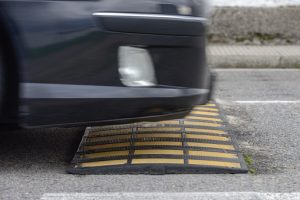 Appendicitis diagnosis is linked to the presence of pain when travelling over speed bumps. A previous study found, if there’s pain experienced when driving over speed bumps, it signals an increased likelihood of acute appendicitis.
Appendicitis diagnosis is linked to the presence of pain when travelling over speed bumps. A previous study found, if there’s pain experienced when driving over speed bumps, it signals an increased likelihood of acute appendicitis.
Acute appendicitis is the most common surgical abdominal emergency, yet diagnosis can often be difficult. There is no specific test to determine a diagnosis of appendicitis. As a result, healthy appendixes are often removed, or worse, appendicitis gets overlooked, which can become quite dangerous.
Advertisement
The study was carried out on 101 patients who were referred to the hospital for suspected appendicitis. Patients were deemed “speed bump positive” if they experienced worsened pain when driving over speed bumps. If pain remained the same whilst traveling over speed bumps, patients were labeled “speed bump negative.” The participants were questioned within 24 hours of their trip to the hospital.
In total, 64 patients travelled over speed bumps and 54 of them were deemed speed bump positive. Thirty-four of the 64 had confirmed appendicitis, and 33 of those patients were confirmed as speed bump positive. Overall, questioning patients travelling to the hospital for suspected appendicitis is beneficial in assisting with diagnosis of appendicitis.
Researcher Dr. Helen Ashdown concluded, “It may sound odd, but asking patients whether their pain worsened going over speed bumps on their way in to hospital could help doctors in a diagnosis. It turns out to be as good as many other ways of assessing people with suspected appendicitis.”
Test to help diagnose appendicitis signs and symptoms
To determine if you may have appendicitis, the following signs and symptoms may be present:
- Dull pain near the navel or upper abdomen.
- Loss of appetite.
- Nausea or vomiting after pain begins.
- Abdominal swelling.
- Constipation or diarrhea with gas.
- Inability to pass gas.
Tests to help diagnose appendicitis include a physical examination to assess pain, blood tests to check for elevated white blood cells, urine test to rule out a kidney stone or bladder infection, and imaging tests such an as abdominal X-ray, ultrasound, and CT scan.
Surgery is typically involved as treatment for appendicitis and involves removing the appendix. Surgery can be done either laparoscopically, which involves less scarring and quicker healing, though in some cases a person may need to be cut open. Your surgeon will determine which form of surgery is best for you based on your circumstances.
